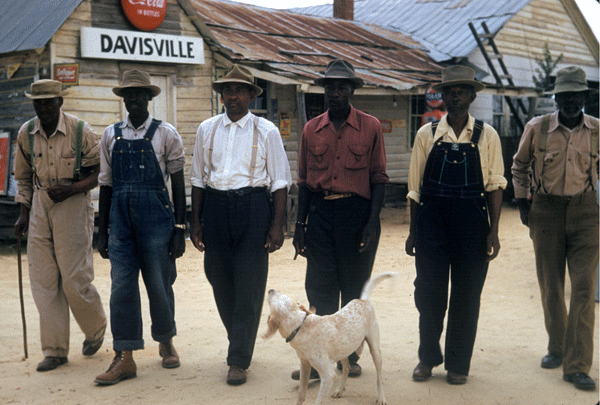Frequently Asked Questions
 Q. What period was the study conducted?
Q. What period was the study conducted?
A. From 1932-1972, the U.S. Public Health Service conducted a study of the effects of untreated syphilis in Black men in Macon County, Alabama.
Q. Where was the study conducted?
A. The study was conducted in Macon County, Alabama, where Tuskegee is the county seat.
Q. How many men participated in the study?
A. Early in the study, 399 men with late latent syphilis, and 201 men without syphilis were initially enrolled. As the study evolved, additional participants were added, so the number of men in the study varies according to the source.
Q. Were the men purposely infected with the disease?
A. No, the 399 men in the syphilitic group were initially recruited because they already had late latent syphilis. The 201 men in the control group did not have the disease.
Q. Was the Tuskegee community aware of the study?
A. Yes, local African American and white physicians were recruited not to treat the men. Autopsy and physician assessments were done at local hospitals. A number of Tuskegee Institute (now known as Tuskegee University) faculty and staff were involved in the study.
Q. When did the U.S. Public Health Service Syphilis Study at Tuskegee become unethical?
A. The study became unethical in the 1940s when penicillin became the recommended drug for treatment of syphilis and researchers did not offer it to the subjects.
Q. How did revelations about the study change the way we conduct Public Health Research today?
A. Federally supported studies using human subjects must be reviewed by Institutional Review Boards. Regulations governing confidentiality were also developed. Researchers now must get voluntary informed consent from all persons taking part in studies. See Research Implications for more information.
Q. Were women involved in the study?
A. The study was limited to black men 25 years of age or older, however as a result of lack of treatment, some women contracted syphilis from men who participated in the study’s syphilitic group. No women were included in the study.
Q. Where can I find a list of the names of the study participants?
A. National Archives, Southeastern Region, maintains a list of Tuskegee Patient Medical Files.
Q. Where can I find photos related to the study?
A. National Archives Southeastern Region
Q. Are any of the study participants alive today?
A. The last study participant, Mr. Ernest L. Hendon, died at age 97 on January 16, 2004.
Q. How much money did the study participants receive from the 1974 out of court settlement?
A. The $10-million settlement was divided into four categories:
1) Living syphilitic group participants received $37,500.
2) Heirs of deceased syphilitic group participants received $15,000.
3) Living control group participants received $16,000.
4) Heirs of deceased control group participants received $5,000.
Q. What benefits do the study participants’ wives, ex-wives, widows, and offspring receive?
A. Infected wives, ex-wives, widows and offspring received lifetime medical and health benefits. The last widow receiving THBP benefits died on January 27, 2009. There are currently 12 offspring receiving lifetime medical and health benefits.
- Page last reviewed: December 14, 2015
- Page last updated: December 30, 2013
- Content Source:


 ShareCompartir
ShareCompartir